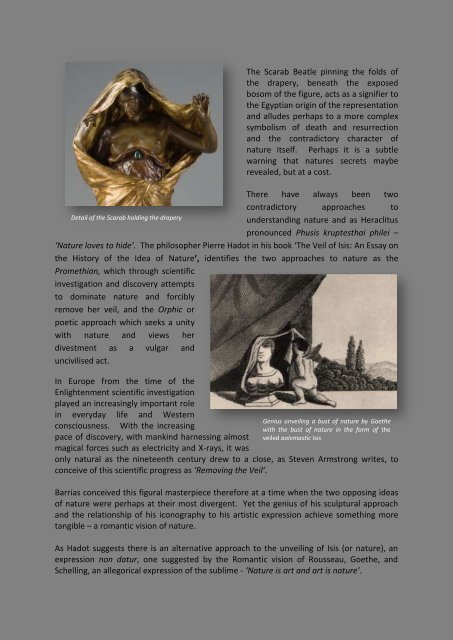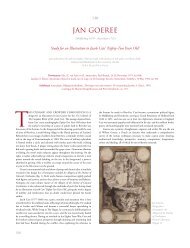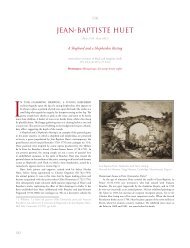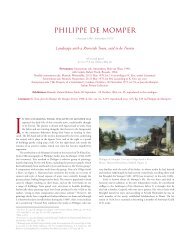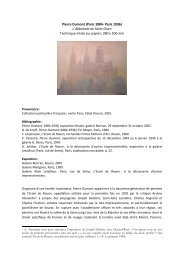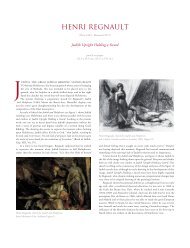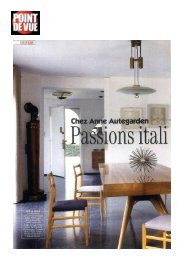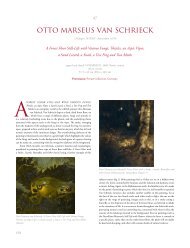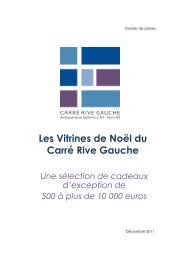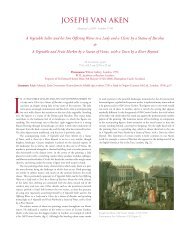La Nature Se Dévoliant Devant La Science
La Nature Se Dévoliant Devant La Science
La Nature Se Dévoliant Devant La Science
Create successful ePaper yourself
Turn your PDF publications into a flip-book with our unique Google optimized e-Paper software.
The Scarab Beatle pinning the folds of<br />
the drapery, beneath the exposed<br />
bosom of the figure, acts as a signifier to<br />
the Egyptian origin of the representation<br />
and alludes perhaps to a more complex<br />
symbolism of death and resurrection<br />
and the contradictory character of<br />
nature itself. Perhaps it is a subtle<br />
warning that natures secrets maybe<br />
revealed, but at a cost.<br />
There have always been two<br />
contradictory approaches to<br />
Detail of the Scarab holding the drapery<br />
understanding nature and as Heraclitus<br />
pronounced Phusis kruptesthai philei –<br />
‘<strong>Nature</strong> loves to hide’. The philosopher Pierre Hadot in his book ‘The Veil of Isis: An Essay on<br />
the History of the Idea of <strong>Nature</strong>’, identifies the two approaches to nature as the<br />
Promethian, which through scientific<br />
investigation and discovery attempts<br />
to dominate nature and forcibly<br />
remove her veil, and the Orphic or<br />
poetic approach which seeks a unity<br />
with nature and views her<br />
divestment as a vulgar and<br />
uncivilised act.<br />
In Europe from the time of the<br />
Enlightenment scientific investigation<br />
played an increasingly important role<br />
in everyday life and Western<br />
consciousness. With the increasing<br />
pace of discovery, with mankind harnessing almost<br />
magical forces such as electricity and X-rays, it was<br />
Genius unveiling a bust of nature by Goethe<br />
with the bust of nature in the form of the<br />
veiled polymastic Isis<br />
only natural as the nineteenth century drew to a close, as Steven Armstrong writes, to<br />
conceive of this scientific progress as ‘Removing the Veil’.<br />
Barrias conceived this figural masterpiece therefore at a time when the two opposing ideas<br />
of nature were perhaps at their most divergent. Yet the genius of his sculptural approach<br />
and the relationship of his iconography to his artistic expression achieve something more<br />
tangible – a romantic vision of nature.<br />
As Hadot suggests there is an alternative approach to the unveiling of Isis (or nature), an<br />
expression non datur, one suggested by the Romantic vision of Rousseau, Goethe, and<br />
Schelling, an allegorical expression of the sublime - ‘<strong>Nature</strong> is art and art is nature’.


